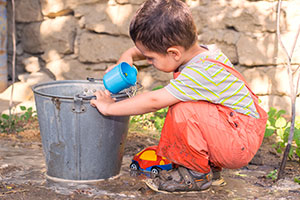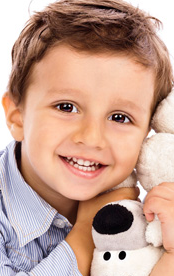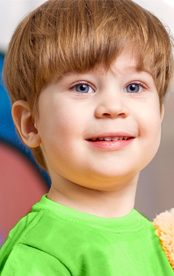What do educators need to know about EBPs for children with autism?
Page 1: An Overview of Autism
 Autism spectrum disorder (ASD) is a lifelong developmental disability that can result in significant developmental delays and behavioral differences. The primary characteristics of ASD are:
Autism spectrum disorder (ASD) is a lifelong developmental disability that can result in significant developmental delays and behavioral differences. The primary characteristics of ASD are:
- Persistent deficits in an individual’s social communication and social interaction across contexts (e.g., difficulty initiating or responding to social interactions, displaying or interpreting facial expressions, or showing interest in peers)
- Restricted, repetitive patterns of behavior, interests, or activities (e.g., flapping of hands, difficulty handling changes in routine, highly focused interest, atypical responses to sensory input)
atypical responses to sensory input
glossary
Research Shows
- The number of individuals identified as having ASD has increased at an alarming rate during the last decade, and is now 1 in 36.
(U.S. Centers for Disease Control and Prevention [CDC], 2024) - A recent report suggests that this increase has not resulted in a rise in the overall number of children with special needs, but rather a shift in the way that students are categorized. The data indicate that, although the number of individuals diagnosed with ASD has increased dramatically over the past 15 years, the overall number of children receiving special education services across all disability categories has not gone up. At the same time, the number of children being identified with learning disabilities has decreased. Although not directly proportional, these findings suggest that a number of students once identified as having learning disabilities are now categorized as having ASD.
(Thompson Policy Institute, 2016) - ASD is approximately 4 times more likely in boys than in girls. It is reported to occur in all racial, ethnic, and socioeconomic groups.
(U.S. Centers for Disease Control and Prevention [CDC], 2024)
Because toddlers, children, and youth with ASD demonstrate a great range of strengths, abilities, and areas of need, ASD is referred to as a “spectrum disorder.” Although they all display the two major characteristics of ASD (i.e., differences in social communication/social interactions and restricted behaviors), they differ in the severity of these symptoms. The table below highlights the differences in the symptoms displayed by the children highlighted in the Challenge video. These children demonstrate the range of characteristics that a teacher might encounter when working with students with ASD.
toddlers, children, and youth
In this module, toddlers, children, and youth will collectively be referred to as children or students..
| Social Communication/Social Interaction | Restricted, Repetitive Patterns of Behavior/ Interests/Activities | |
|---|---|---|
 Drew (4 yrs old) |
|
|
 Jaquese (10 yrs old) |
|
|
 David (2 1/2 yrs old) |
x
functional play skills glossary |
|
 Michelle (15 yrs old) |
|
|